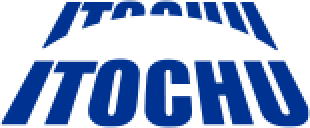ITOCHU Corporation
Tosca helps ITOCHU Corporation make the leap from a 25-year-old legacy SAP to S/4HANA Cloud
shorter execution times
default
reduction in setup time
default
reduction in total testing effort
default

Company overview
Founded in 1858, ITOCHU Corporation (ITOCHU) is one of Japan’s leading “sogo shosha” companies, where a central trading organization handles all financing, marketing, and coordination for multiple companies in its ecosystem. With 100 bases in 62 countries, ITOCHU is engaging trading in various area, such as textile, machinery, metals, minerals, energy, chemicals, food, general products, realty, information and communications technology, and finance, as well as business investment in Japan and overseas. In 2019, ITOCHU launched overseas company core system transformation initiative built on three pillars: digitalization, simplification, and innovation.
Completing a transformation initiative within the company’s sprawling IT landscape posed a major challenge: The IT team would need to ensure the business would have no interruptions to its ability to be agile and innovative throughout several major systems changes. One of the most challenging points was Fit-to-Standard approach, which the team planned to migrate from a highly customized, on-premises instance of SAP ERP ECC 6.0 to S/4 HANA Cloud in order to transform the system to a true digital platform. The transformation project included the entire process of ITOCHU business, from contracts, logistics and inventory management to finance management.
Shusaku Harada, the IT strategist in ITOCHU Corporation IT & Digital Strategy Division, who is leading the transformation for 50 ITOCHU Overseas companies as a project manager, identified testing as one of the critical area for the project’s success. The organization’s existing, mostly manual processes would need to be modernized and unified to meet the extended scope and scale requirements of the SAP transformation initiative.
“Our testing limited us on two points,” he said. “Firstly, resources were a problem. It would take us years to test something for implementation in 50 companies. Secondly, the quality of our testing needed to be standardized,” Harada said.
Before implementing Tricentis Tosca, ITOCHU’s testing team used a standard regression suite of 120 test cases, each of which required 1.5 hours to test manually. When testing in different countries, the team duplicated this test set and modified it to meet the needs of each region. This geographical complexity led to exponential increases in the time required for regression testing, which was quickly becoming unsustainable for the team of 10 testers.
Harada knew his team would need a scalable, automated solution that would work across both the legacy and new SAP environments. “We chose Tosca for its strong connection with SAP,” he said.
ITOCHU’s team of 10 testers used Tosca to automate regression testing, which significantly accelerated the implementation phase and ensured that both new and migrated business processes worked as intended in S/4HANA Cloud.
 Products:
Products:
